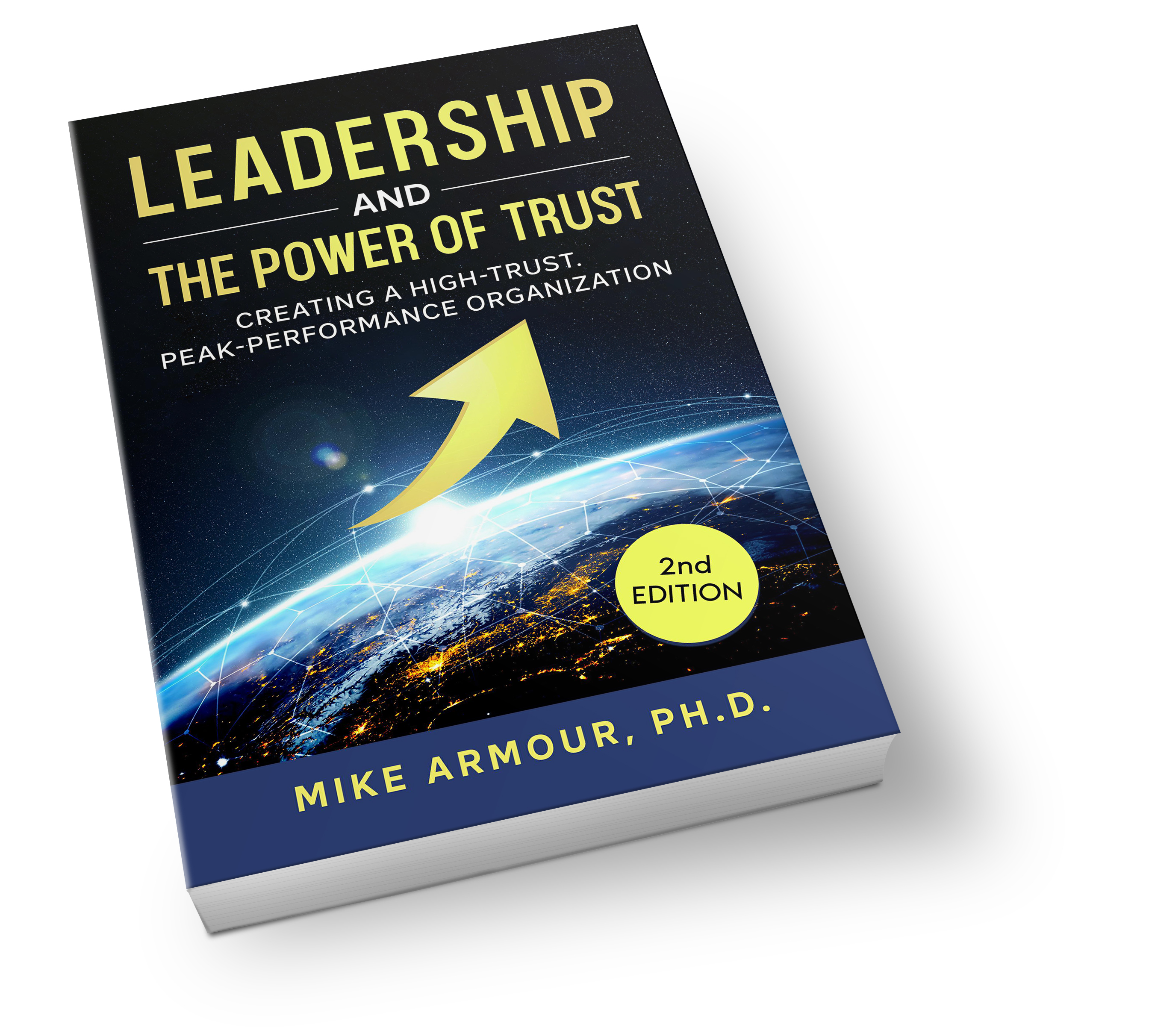Trust-Centered Leadership®
Trust-Centered Leadership® is an approach to leading and developing organizations that sets trust-building at the forefront of the leadership agenda.

Dr. Mike Armour, SLDI's founder and managing principal, has laid out the principles of this approach in his widely-read book Leadership and the Power of Trust: Creating a High-Trust, Peak-Performance Organization. The key principles of Trust-Centered Leadership® are outlined in the slideshow below.
Dr. Mike develops these same principles in our leadership training course on trust-building. He also keynotes on this topic.
Why Trust-Building is Vital
At the heart of most troubled organizations, Dr. Mike finds, are issues of trust which have gone unrecognized, unaddressed, or unresolved. When these trust issues are properly addressed and rectified, many of the most persistent problems in the organization start to dissipate.
Those who practice Trust-Centered Leadership® measure every decision, every action, and every initiative against two goals.
- First, the goal of maximizing trust in themselves as leaders.
- And second,the goal of building deeper trust within the organization.
Trust-Centered Leadership® does not replace other styles of leadership. Instead, it works alongside existing leadership styles to intensify your credibility, leverage, and impact as a leader.
The High Cost of Damaged Trust
Trust is at a premium in today's workforce. Jobs lost to mergers and acquisitions, corporate scandals, downsizing, and outsourcing have taken their toll on worker loyalty and trust. As a result, American business now runs a "trust deficit" which is as glaring as its trade deficit.
Lost trust is a serious issue. Trust is the glue that holds your organization together, the lubricant that allows it to run smoothly.
When trust breaks down, the result is fear, anxiety, suspicion, and insecurity. Morale sags. Turf-guarding and self-protection take over. People dig in their heels. They resist change, even when it is essential for survival. Communication becomes closed and self-serving. Productivity inevitably plummets and drags profits down with it.
For all of these problems, Trust-Centered Leadership® is the antidote.
Slideshow: Nine Principles of Trust-Centered Leadership






























